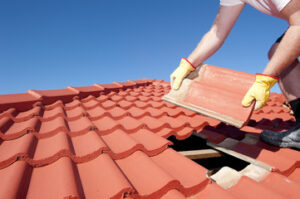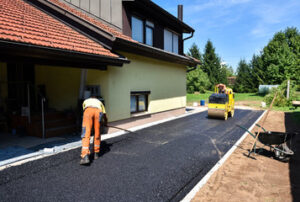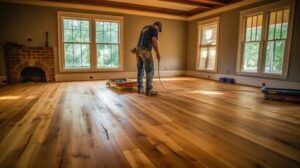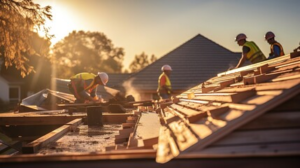Epoxy floor coatings have long been used in garages and basements, but they are now gaining popularity in other parts of the house. Unlike carpet or vinyl, epoxy can hold up to heavy traffic and can be customized for a polished look.
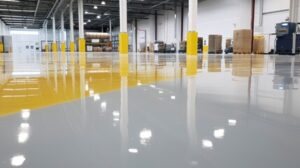
It can also be enhanced with slip-resistant additives and decorative flakes for safety and visual appeal. Visit https://www.surfaceprosepoxy.com/ to learn more.
Epoxy is an exceptionally hard, plastic-like substance that resists chemical spills, heavy foot traffic, impact and abrasion. It’s also fire-resistant, water-tight, and heat resistant. This type of flooring is highly effective in industrial settings that demand a durable, sturdy floor surface.
Its ability to be customised with various safety features makes it ideal for factory floors. Many factories feature sensitive machinery that requires anti-static or ESD epoxy, which prevents static electricity build-up from causing dangerous shocks. The customisable properties of the epoxy also enable businesses to mark out walkways and zones on the floor, ensuring established safety protocols are followed.
In addition, a new epoxy coating can last longer than tile, sheet and plank flooring systems. This is due to the fact that seamless poured epoxy is devoid of weak seams found in tile and sheet flooring, as well as the welded edges on plank floors that often break down over time.
When working with or around uncured epoxy solutions, it’s important to wear protective equipment including a face mask, gloves and eye protection. The vapors that are emitted during the curing process, as well as the dust created, can be hazardous to your health and must be avoided. If the solution gets on your skin, it must be washed off immediately with running water and soap.
After an epoxy flooring system is installed, it should be regularly inspected and resealed as needed to keep it looking good and performing well. The resealing process involves cleaning the surface, applying an epoxy primer and then using a roller to apply the epoxy coating. The concrete must be completely dry before the primer can be applied, so a professional should always test the concrete to ensure it is ready for the epoxy coating.
When it comes to commercial and industrial flooring, epoxy is a great choice. Not only is it beautiful, but it also offers a wide range of safety features that can make a workplace safe for employees. The installation of epoxy also provides an opportunity to show that a business is committed to safety and sustainability, making it a more attractive place for potential customers and employees to visit.
Durability
Epoxy is renowned for its durability, protecting floors against impact damage and chemical spills. These floors can also withstand heavy traffic and forklift use, making them ideal for commercial environments. Its chemical resistance and seamless installation eliminate the need for regular maintenance and repairs, saving businesses time and money.
However, the longevity of epoxy flooring depends on the conditions and environment it is installed in. For example, a floor that is exposed to constant foot and machinery traffic will wear down faster than one that is used only for storage purposes. Also, epoxy can be sensitive to temperature fluctuations and humidity levels during the curing process. Fortunately, these problems can be avoided by working with epoxy specialists who understand how these factors affect the performance of epoxy coatings.
The durability of epoxy can also be improved with preventive measures and regular maintenance. For instance, walk-off mats at entryways can help to eliminate dirt and moisture before it has a chance to etch into the concrete surface. Also, a thorough cleaning of the concrete surface prior to applying the epoxy coating will help to ensure that it adheres and cures properly. Using non-slip additives and avoiding the use of harsh chemicals and abrasive tools will also increase the lifespan of epoxy floors.
Moreover, epoxy coatings can be customized to suit specific aesthetic preferences. For example, decorative flakes can be added to the epoxy mixture to create an attractive and interesting visual effect. Additionally, they can even be colored to match a company’s branding or to create a particular atmosphere in a space.
The most important factor to consider when installing an epoxy coating is proper preparation of the substrate. This involves cleaning the surface extensively to remove any oils or grease, removing any cracks or chips, and grinding uneven surfaces to level them. Once the concrete is prepared, the epoxy mixture can be applied to the surface with rollers or squeegees, depending on the manufacturer’s instructions. In addition, the coating should be left to cure according to the manufacturer’s specifications for maximum durability.
Aesthetics
Epoxy floors offer a sleek and modern aesthetic that enhances the visual appeal of homes and businesses. In addition, their seamless application eliminates cracks and crevices where dirt and bacteria can collect. This contributes to the hygiene of the floor, and it also adds a polished and refined look that is perfect for high-traffic areas. Furthermore, epoxy is available in a variety of colors and finishes to suit various design preferences, making it a versatile flooring solution.
Because of their highly resistant structure, epoxy floors can withstand continuous exposure to harsh chemicals without becoming compromised or damaged in any way. This makes them ideal for a wide range of industrial and commercial spaces, including warehouses and manufacturing plants. Additionally, some epoxy coatings are customizable and can be enhanced with slip-resistant additives to improve traction on the floor.
Compared to traditional flooring options, epoxy floors are more affordable and require less maintenance. They can also be installed over existing concrete, which saves installation costs and time. Lastly, epoxy flooring is easy to clean and does not require waxing, which further reduces cleaning and maintenance costs.
The durability of epoxy floors can help to increase the value of a home or business, making them an excellent investment. In addition, the attractive aesthetics of the flooring can also attract potential homebuyers or customers to a business. Moreover, the ease of cleaning and maintenance can also save a company money in the long run by decreasing cleaning and repair costs.
An epoxy resin floor is a polymer composite that is formulated with a precise mixture of hardener and resin. During the chemical reaction, the hardener creates an epoxy-bonded material that is extremely durable and strong. It can withstand the constant impact of heavy machinery and vehicles, making it ideal for busy warehouses or other high-traffic spaces.
An epoxy resin floor is also a good choice for garages because it can withstand the impact of vehicles and furniture. It can also resist stains and other damaging chemicals, making it easy to maintain. It can be easily cleaned with a broom or mechanical sweeper, and it requires no waxing.
Maintenance
While epoxy floors can withstand quite a bit of wear and tear, they do require maintenance to keep them looking good and functioning well. This is especially true in areas that are subject to frequent influxes of people and machinery.
Regular sweeping and cleaning keep the surface free of small debris particles that can scratch or damage the epoxy. A simple broom or dust mop used with warm water is the best way to clean these surfaces, and it’s important to use a pH-neutral cleaner. In addition, spills should be cleaned promptly to prevent staining and other types of damage to the concrete.
It’s also important to consider the environmental variables that can impact an epoxy flooring system, such as sunlight, humidity, and temperature fluctuations. Proper protection measures can help mitigate these factors, and choosing an epoxy coating variant that is designed to resist a specific type of chemical is a smart move for facilities that are likely to encounter spills or chemicals.
Other maintenance steps include inspecting the seals and joints to ensure they’re intact, and using a repair kit to address minor flaws and cracks. For more extensive repairs, it’s a good idea to consult with a professional, as they have the knowledge and expertise to handle these tasks in a safe and effective manner.
Finally, it’s a good idea to install floor mats at entrances to trap dirt and grit from being tracked into the facility. This will help to prolong the life of the flooring, while ensuring a sanitary and clean environment for workers and customers. Other protective measures that can be taken include placing furniture pads under heavy equipment or furniture to protect against scratches, and using a pressure washer on a low setting to periodically give the epoxy flooring a thorough cleaning. Taking these measures will help to maintain the longevity and durability of your epoxy floors, saving you from the cost and hassle of replacing these high-quality flooring solutions in the future. If you’d like more information about the benefits of epoxy flooring and how to incorporate it into your commercial space, contact us for a consultation.

